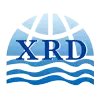Introduction: The Challenge of Winter Road Maintenance
Winter road safety presents a global challenge for cold regions. Winter roads create dangerous driving conditions worldwide. In the U.S., slippery roads cause about 150,000 crashes each year, resulting in $5 billion in damages.
In China's colder northern regions, roads become even more hazardous during winter months (car accidents jump by 30-40% compared to warmer seasons).
Calcium chloride has served as a high-performance deicer in Western countries for over 50 years. The American Salt Institute reports that North America uses over 2 million tons annually. Compared to sodium chloride, calcium chloride offers distinct advantages in low-temperature performance, action speed, and environmental impact.
This comprehensive guide examines the science, application techniques, environmental considerations, and cost-effectiveness of calcium chloride deicers.
1. The Science Behind Calcium Chloride Deicing
1.1 Exothermic Reaction Mechanism
Calcium chloride's effectiveness stems from its unique physicochemical properties. Its dissolution generates substantial heat through a two-stage process:
- Lattice Energy Breakdown: Energy absorption to break Ca²⁺-Cl⁻ ionic bonds
- Hydration: Formation of [Ca(H₂O)₆]²⁺ complex releasing 82.8 kJ/mol
Journal of Physical Chemistry data shows each kg of anhydrous CaCl₂ releases 745kJ heat, melting 3-4 times its weight in ice (International Ice Control Association 2019).
Technical Note: Dihydrate CaCl₂·2H₂O produces 15% less heat but offers better storage stability.
1.2 Low-Temperature Performance
CaCl₂'s -52℃ eutectic point results from:
- Strong ion hydration disrupting ice structure
- Low eutectic mixture formation
- High ionic strength reduces water activity
NSIDC tests show at -25℃:
- CaCl₂ penetrates 5cm of ice in 8 minutes
- NaCl requires 45 minutes
- Urea proves ineffective
1.3 Comparative Deicer Performance
| Parameter | CaCl₂ | NaCl | KAc | Urea | NaFo |
|---|---|---|---|---|---|
| Minimum Temp | -52℃ | -21℃ | -60℃ | -12℃ | -25℃ |
| Melting Index | 1.0 | 0.3 | 1.2 | 0.2 | 0.6 |
| Duration | 8-12h | 2-4h | 12-16h | 1-2h | 4-6h |
| Corrosiveness | Medium | High | Low | None | Low |
| Eco-Score | 65 | 45 | 85 | 70 | 75 |
2. Professional Application Guide
2.1 Precision Dosage Control
2.1.1 Weather-Adjusted Application
The University of Alberta's dynamic model optimizes usage by 20-30%, considering:
- Pavement temperature
- Dew point
- Wind speed
- Solar radiation
Real-Time Adjustment Table:
| Temp Range | Wind<10km/h | Wind10-20km/h | Wind>20km/h |
|---|---|---|---|
| -5℃ to 0℃ | 15g/m² | 20g/m² | 25g/m² |
| -10℃ to -5℃ | 25g/m² | 30g/m² | 35g/m² |
| -20℃ to -10℃ | 40g/m² | 50g/m² | 60g/m² |
2.1.2 Special Scenario Protocols
- Steel Bridges: 30% reduced dosage + 0.5% inhibitor
- Porous Pavement: Pre-wet treatment prevents pore clogging
- Airfields: Aviation-grade CaCl₂ (≥97% purity)
2.2 Advanced Spreading Techniques
2.2.1 Smart Spreader Systems
Modern equipment features:
- Infrared pavement sensors
- Automated weighing feedback
- GPS-integrated mapping
- Pneumatic conveyance (±5% accuracy)
2.2.2 Critical Parameters
-
Spinner Speed:
- Granular: 800-1200rpm
- Flake: 600-900rpm
-
Height:
- Granular: 30-50cm
- Liquid: 40-60cm
-
Speed:
- Urban: 20-30km/h
- Highway: 40-50km/h
3. Environmental Management
3.1 Lifecycle Impact Assessment
3.1.1 Soil Ecosystem Effects
Environment Canada's 5-year study found:
- 300-500% calcium increase within 5m
- 40% growth inhibition in sensitive species
- 25-30% microbial diversity reduction
Mitigation Measures:
- 10m vegetative buffers
- Spring gypsum (CaSO₄) application
- Salt-tolerant species planting
3.1.2 Water Protection
EPA Standards:
- ≥2hr retention in sedimentation basins
- Bioretention systems for runoff
- Downstream Cl⁻ monitoring (230mg/L limit)
3.2 Corrosion Prevention
3.2.1 Advanced Materials
-
Nano-Coatings:
- Graphene-enhanced epoxy (5x protection)
- Self-healing microcapsule coatings
-
Composites:
- CFRP guardrails
- Basalt fiber concrete
3.2.2 Electrochemical Solutions
- Impressed with current CP systems
- Smart sacrificial anodes (Mg-RE alloys)
- Wireless corrosion sensors
4. Decision Support Tools
4.1 Cost-Benefit Analysis
4.1.1 Total Cost of Ownership
Components:
- Direct Costs:
- Procurement
- Logistics
- Labor/equipment
- Indirect Costs:
- Infrastructure corrosion
- Environmental remediation
- Accident reduction benefits
4.1.2 Case Comparison
| Metric | Minnesota (CaCl₂) | Hokkaido (KAc) |
|---|---|---|
| Annual Cost/km | $8,500 | $12,000 |
| Accident Reduction | 38% | 42% |
| Equipment Life | 7 years | 10 years |
| Vegetation Recovery | $1,200/km | $800/km |
4.2 Procurement Standards
4.2.1 Chinese Specifications
-
GB/T 23851-2021:
- CaCl₂ ≥94%
- Insolubles ≤0.5%
- Heavy metals ≤10mg/kg
-
JT/T 1218-2018:
- Spreading uniformity ≥85%
- Pre-wet solution 20-25%
- Speed limits
4.2.2 International Certifications
- ISO 9001/14001
- SIC-800 sustainability
5. Future Trends
5.1 Technological Innovations
-
Composite Deicers:
- CaCl₂ + inhibitors + biocides
- Nano-encapsulated slow-release
-
Smart Systems:
- IoT moisture sensors
- AI dosage prediction
-
Green Alternatives:
- Plant-based extracts
- Industrial byproducts
5.2 Regulatory Developments
- EU: 2025 chloride emission limits
- North America: "Zero chloride" pilot programs
- China: "Green snow removal" in 14th FYP
Conclusion: Balancing Efficiency & Sustainability
Calcium chloride remains indispensable for winter maintenance. Through scientific management, technological innovation, and standardized operations, we can maintain transportation efficiency while controlling environmental impact. Recommended actions:
- Implement precision application systems
- Invest in corrosion-resistant infrastructure
- Participate in regional monitoring networks
- Monitor emerging alternatives
References
- U.S. Department of Transportation Federal Highway Administration. (2023). - "Handbook of Winter Maintenance Operations." - FHWA
- "NCHRP Report 962: Guide for Snow and Ice Control." - Transportation Research Board
- "Code of Practice for the Environmental Management of Road Salts" - Environment and Climate Change Canada
- "Winter Road Maintenance Manual" - PIARC (World Road Association)
- Minnesota Stormwater Manual - "Environmental impacts of road salt and other de-icing chemicals" - Minnesota Pollution Control Agency

